Affiliate links on Android Authority may earn us a commission. Learn more.
Elephone P5000 review - a 5 inch, full HD smartphone with a 5350 mAh battery
If there is one thing that generates the most complaints from smartphone users it is battery life. Many devices on the market today, sadly even flagship devices, just don’t offer the battery life needed. Smartphones have a bewildering array of features and us poor users are prone to using them! When combined with the push to make devices thinner (if not smaller) then it is the poor old battery that seems to take a back seat.
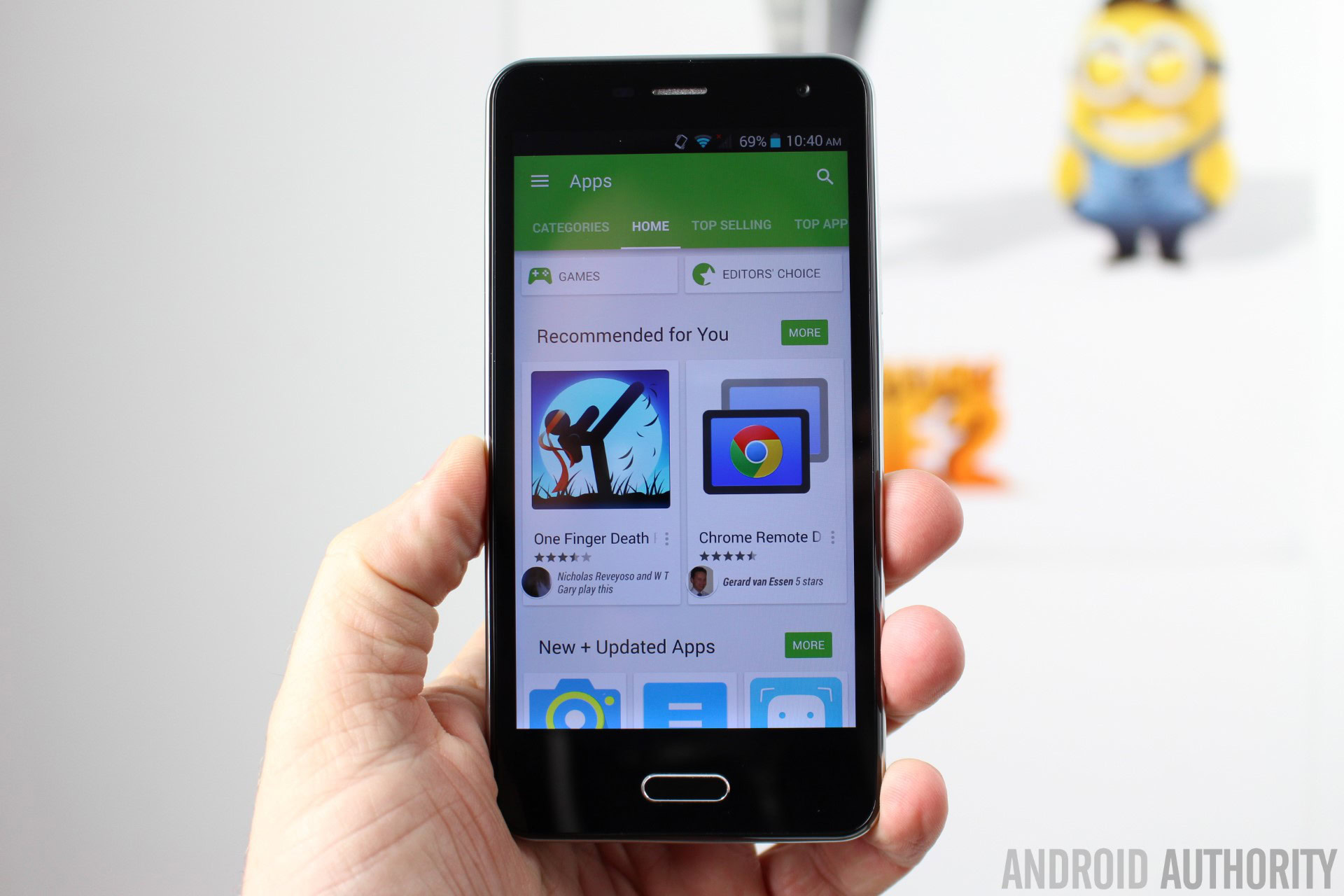
If you are looking for a phone with a big battery then maybe the Elephone P5000 is the phone just for you.
In short, the Elephone P5000 is powered by an octa-core Cortex-A7 based processor, has a 5 inch, full HD display, and runs Android 4.4 KitKat. Here are the full specs:
| Display | 5” full HD IPS 1920 x 1080 pixels |
|---|---|
Processor | MediaTek MT6592 Octa core Cortex-A7 at 1.7GHz |
GPU | ARM Mali-450 MP4 |
RAM | 2GB |
Storage | 16GB, microSD card slot, up to 64GB |
Camera | 16 MP rear camera, 8 MP front camera |
Battery | 5350 mAh |
Connectivity | GPS, microUSB 2.0, Wi-Fi 802.11 b/g/n, Bluetooth, NFC |
Networks | GSM, 3G: 900/1900/2100 MHz |
Software | Android 4.4 with Google Play. |
Dimensions | 146 x 73.6 x 9.3 mm, 206g |
SIM slots | Dual-SIM |
Because of the large battery, the P5000 is thicker than many of today’s devices, however it isn’t overly thick. The specs say the phone is 9.3mm thick, but my measurements set it closer to over 10mm. Although over 10mm may sound thick, it is still thinner than popular phones like the Moto G and about the same thickness as a Nexus 6. But of course, with a 5000+ mAh battery.
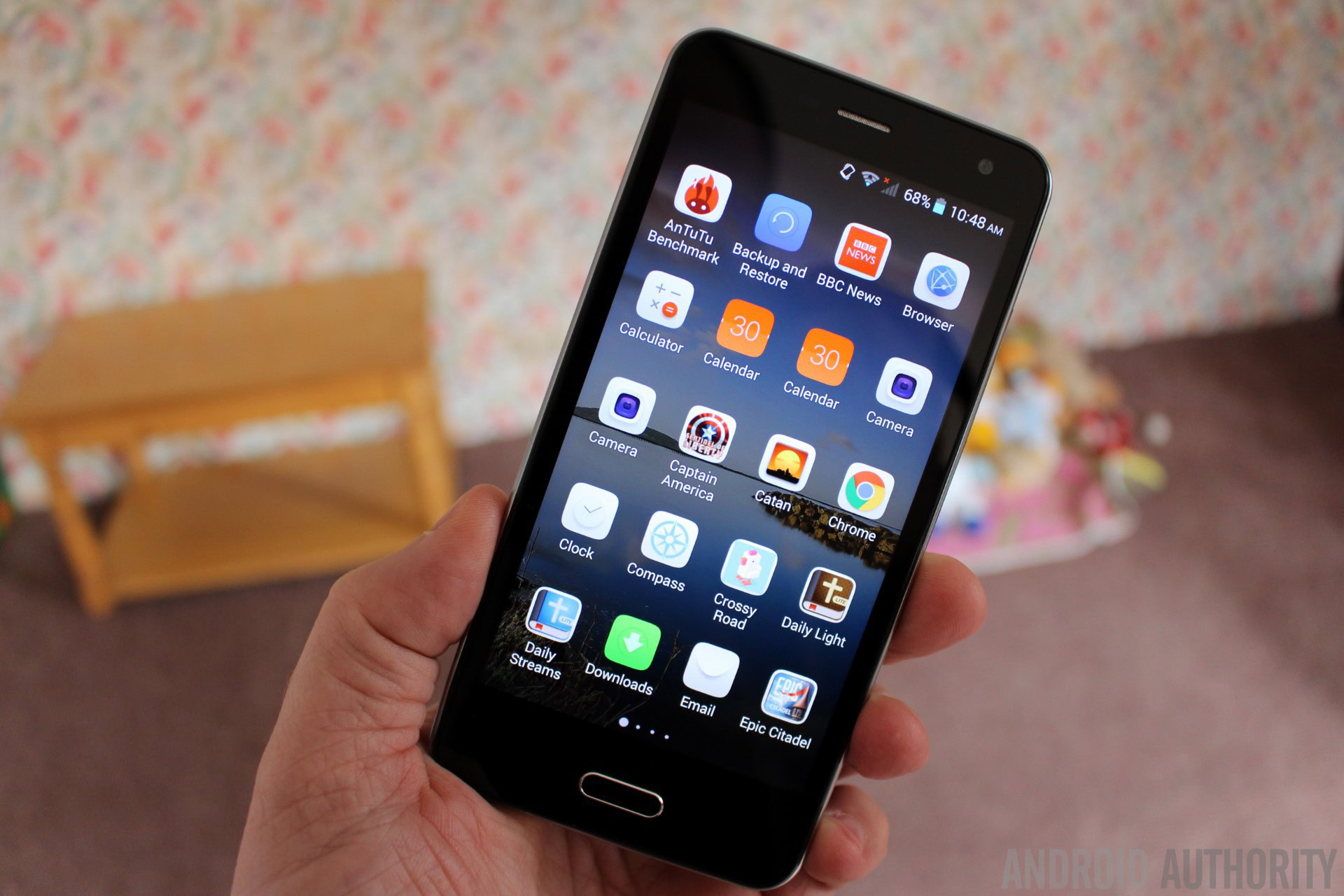
Like many of Elephone’s recent devices, the device uses lots of dark colors in combination with rounded edges and silver colored trim. There is a silver colored band around the edge of the phone, and silver can be seen on the home button, on the logo, as well as around the camera lens.
On the front is the 5 inch , full HD display, the front facing camera, and a set of capacitive keys which flank the home button. The capacitive keys light up when pressed. The home button also houses the built-in fingerprint reader.
Down the right-hand side are the volume rocker and the power button. Both are easily accessible when the phone is held in your left hand. On the top you will find the 3.5mm headphone jack and the micro USB port. On the bottom edge are the speaker grills. Flipping the phone over, you will see the prominent Elephone logo, the flash and the camera lens.
In terms of build quality, the phone feels solid and robust enough, however the power button on my test unit is slightly inset, giving it a slightly spongy feel when pressed. At first I feared that the button was actually broken, however it did function as expected. Also the home button seems to not always detect that it has been pressed. I can’t tell if this is software or hardware, but it was a little annoying at times.
The 5 inch display on the P5000 is good. It is an IPS display with a resolution of 1920 by 1080. That works out to 440 dpi. The color reproduction is faithful, however when placed next to a phone with a better screen I noticed that the whites are a little “dirty” and lacking in punch. However it isn’t something that I noticed while using the phone, only when doing a direct screen comparison. It is likely just be the color temperature of the display.
At the heart of the P5000 is the MediaTek MT6592. It has an octa-core Cortex-A7 based processor which is coupled with a Mali-450MP GPU. The Mali-450 is getting quite old now and only provides OpenGL ES 2.0, and not 3.0. However it still performs reasonably well for 3D gaming.My experience with the P5000 was pleasant. The user interface responds well and I didn’t notice any lags or stutters. Swiping and general navigation was always smooth and fast. For everyday usage like browsing the web, reading email, checking my calendar etc, I have no complaints at all. And while the Mali-450MP is certainly an older GPU, it was able to handle games like Riptide GP2 without any problems.
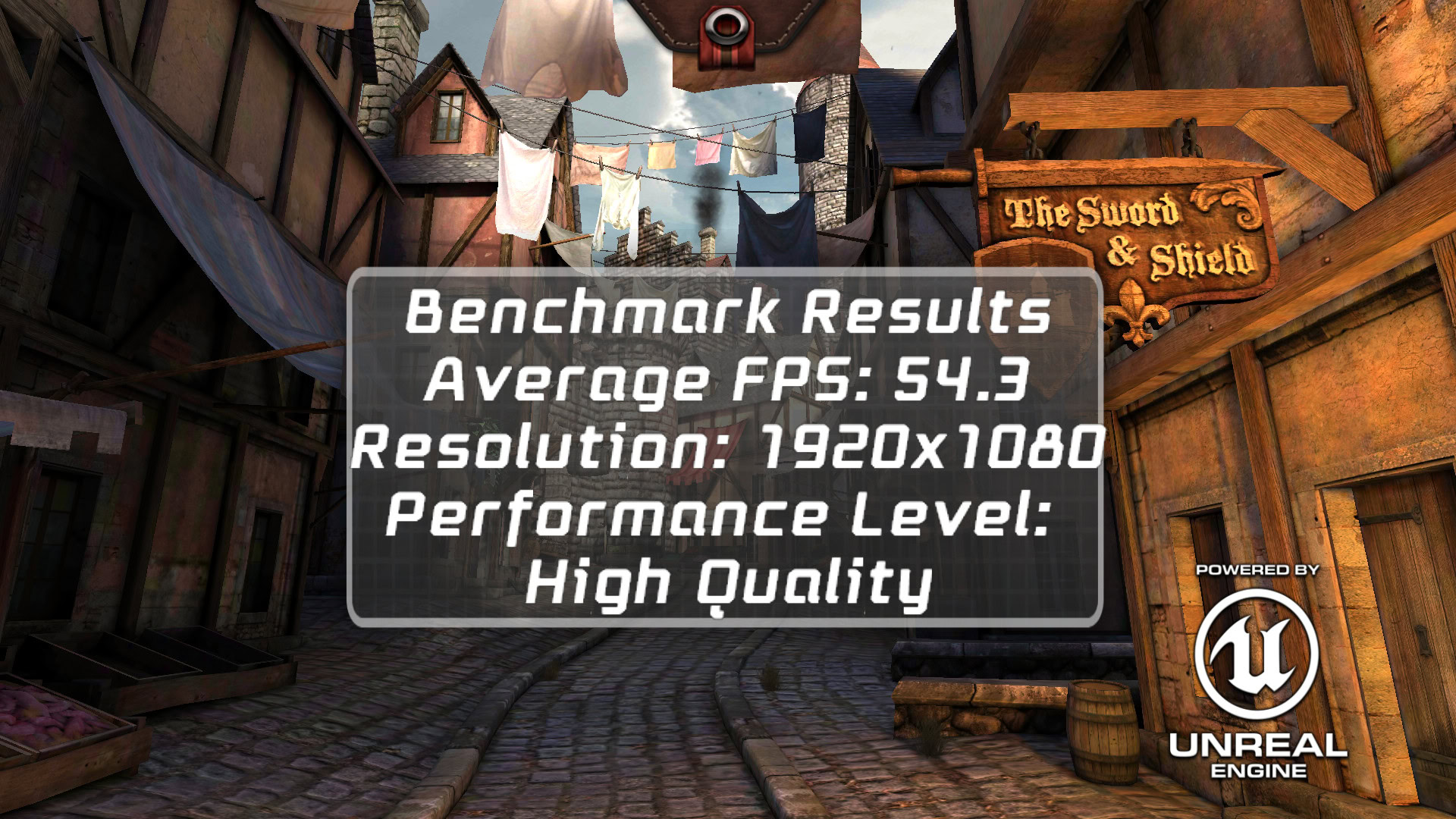
As for the benchmarks, the P5000 managed to chalk up 54.3 frames per second on Epic Citadel in High Quality mode, and scored an unverified 31749 on AnTuTu.
One other thing worth mentioning about the CPU/GPU package is that when pushed hard the device becomes quite warm. I am used to a little warmth on the back of a phone after playing 3D games, however in this particular case the front of the phone around the ear piece also heats up. Someone called me while I was playing some games on the device. When I placed it to my ear it was quite uncomfortable. Thankfully the heat dissipates quite quickly, but it is something to be aware of.
The star attraction of the P5000 is of course its 5350 mAh battery. That is a big battery for a phone! To put it into perspective, the Nexus 7 (2013) tablet has a 3950 mAh battery, the Nexus 6 has a 3220 mAH battery, the Nexus 5 has a 2300 mAh battery, and the Moto G (2nd gen) has a 2070 mAh battery. In other words, the battery in the P5000 is bigger than the battery in some 7 inch tablets, and at least twice the size of the battery in many popular 5 inch phones.
I charged the phone overnight in Friday and started using it over the weekend. The battery lasted until late on Monday morning. That was a total of 2 days and 6 hours, with a on screen time of 5.25 hours. Wi-Fi and 3G were on all the time, as was sync (I was receiving all my emails etc). There is also about 90 minutes of game playing in the mix.
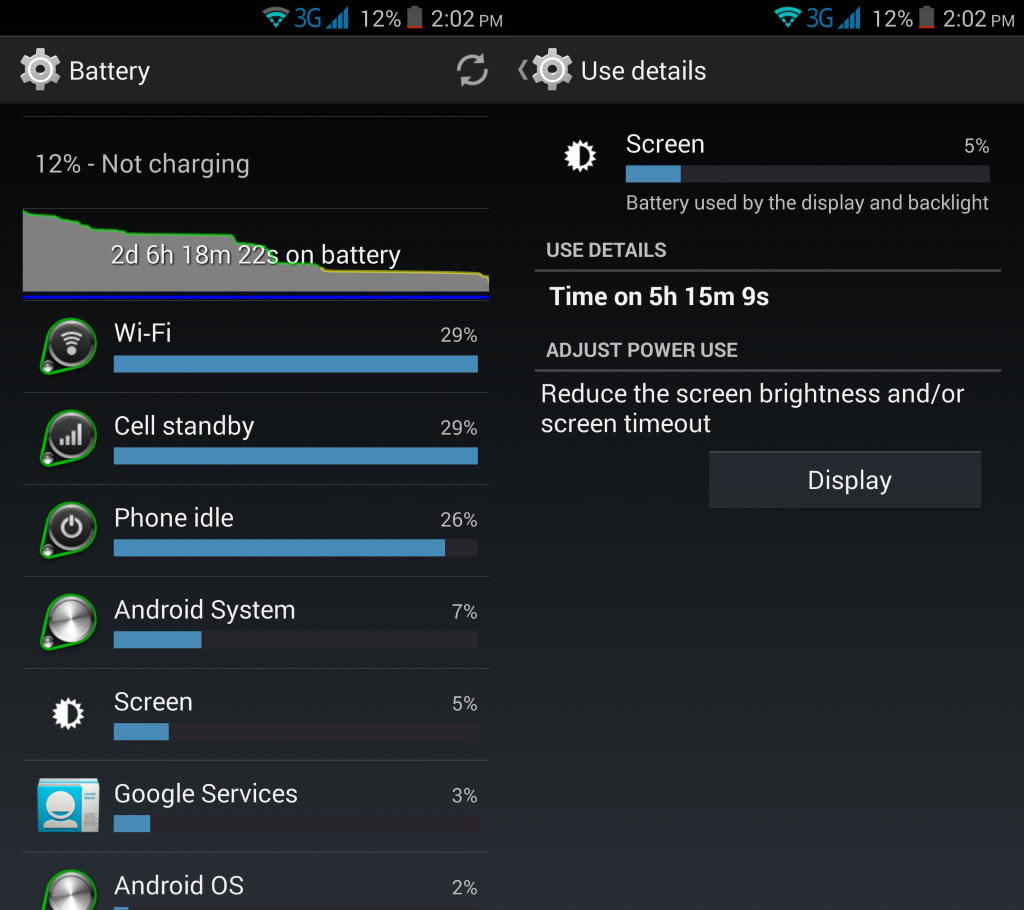
I ran some individual tests which basically confirmed my weekend testing. According to GameBench you can play 2D games for around 6 hours on one charge, while intensive 3D games will work for around 4 hours. Alternatively you can get about 5 hours of constant YouTube streaming over Wi-Fi.
The phone has two speaker grills on its bottom edge, however they don’t seem to have any actual relationship to the internal speaker! Covering both grills only muffles the sound slightly and the speaker appears to be buried in the phone’s innards somewhere. Taking off the battery cover doesn’t reveal any obvious speaker bits. Pure audiophiles will likely be concerned about sound fidelity, however the advantage of this setup is that the phone sounds the same regardless of how the device is positioned: on its back, on its front, with the grills covered, and so on.
The P5000 is a dual SIM phone that offers quad-band GSM, which means 2G will work just about anywhere in the world; and tri-band 3G, on 900, 1900 and 2100MHz. The 3G will work in lots of countries around the world, especially in Europe and Asia. In the USA you will get 2G coverage but that is about it.
The GPS performance is excellent. The device is able to get a lock easily outdoors and can even get a lock indoors. I tested the P5000 with Nokia Here maps and I was able to use the turn-by-turn navigation without any problems.
The P5000 comes with 2GB of RAM, which is to be expected for a phone in this price range. In terms of internal storage, the device comes with 16GB of flash and has a micro-SD card slot, which can accept cards up to 64GB. Thankfully, unlike other MediaTek based devices, the internal storage isn’t divided up, you get access to the whole lot, which is around 13GB.
This phone has a 16MP rear facing camera and a 8MP front facing camera. The pictures are crisp and the color reproduction is good. The sensor struggles a bit in low-light situations, but for outdoor shots I was quite impressed. The inclusion of an 8MP front facing camera is good news for those who like selfies, however I did find the front camera tends to over expose pictures.
The included camera app, which looks to be the standard AOSP app, offers a few interesting features including HDR and Panorama. In the settings you can change things like the exposure level, the scene type, the white balance, face detection and so on. Overall, the app is fairly comprehensive but it doesn’t have any advanced modes or filters. You can also install and use third-party apps including Google’s camera app.
Here are some sample shots, judge for yourself:
The P5000 runs stock Android 4.4.2. You get access to Google Play and all of Google’s services like YouTube, Gmail and Maps. I think the device is rooted by default as it comes with Chainfire’s SuperSU pre-installed. The reason I say “I think” is that the phone received an Over-The-Air (OTA) update within the first day of me getting it, and after the update SuperSU complains that the “su” binaries are no longer installed. My guess is that the OTA removed them and I didn’t check the phone’s root status before the OTA arrived.
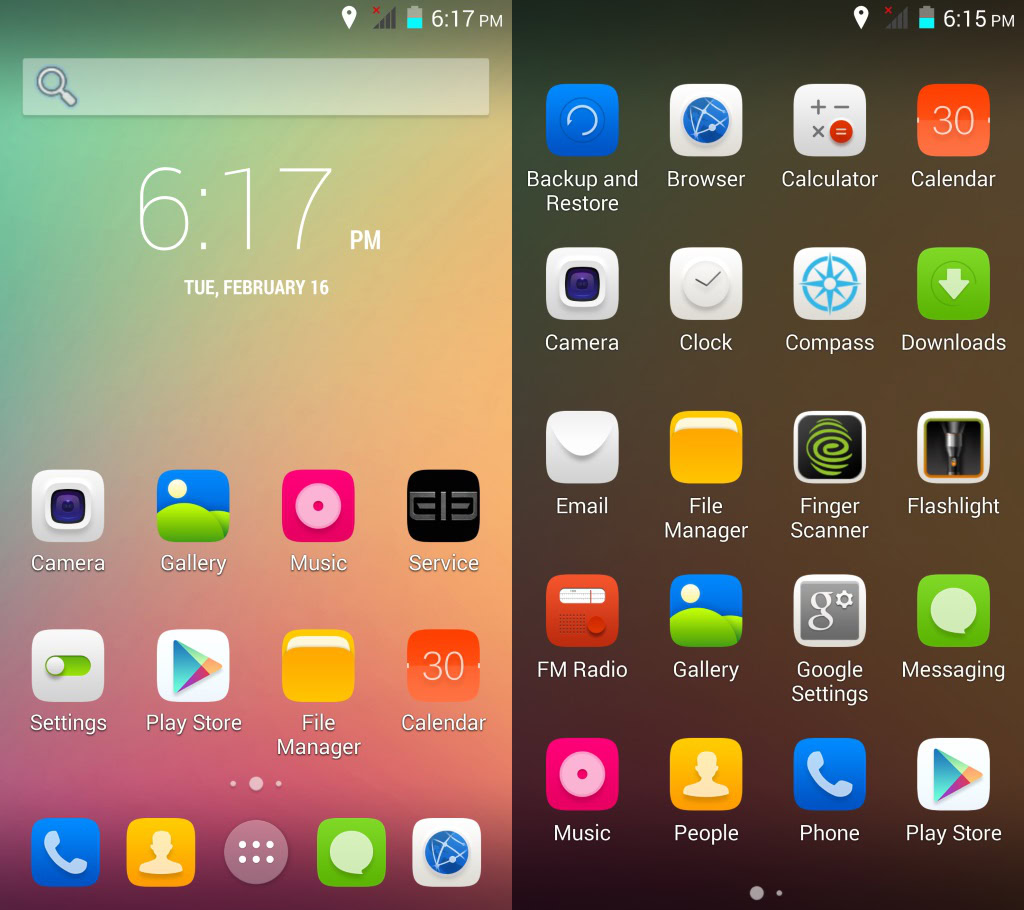
The UI is basically what you would expect from stock Android. The launcher has been lightly skinned by Elephone and there are a few additional sections in the settings for Gesture Recognition and for the Finger Scanner [sic]. But those are about the only differences between the supplied version of Android and pure stock Android.
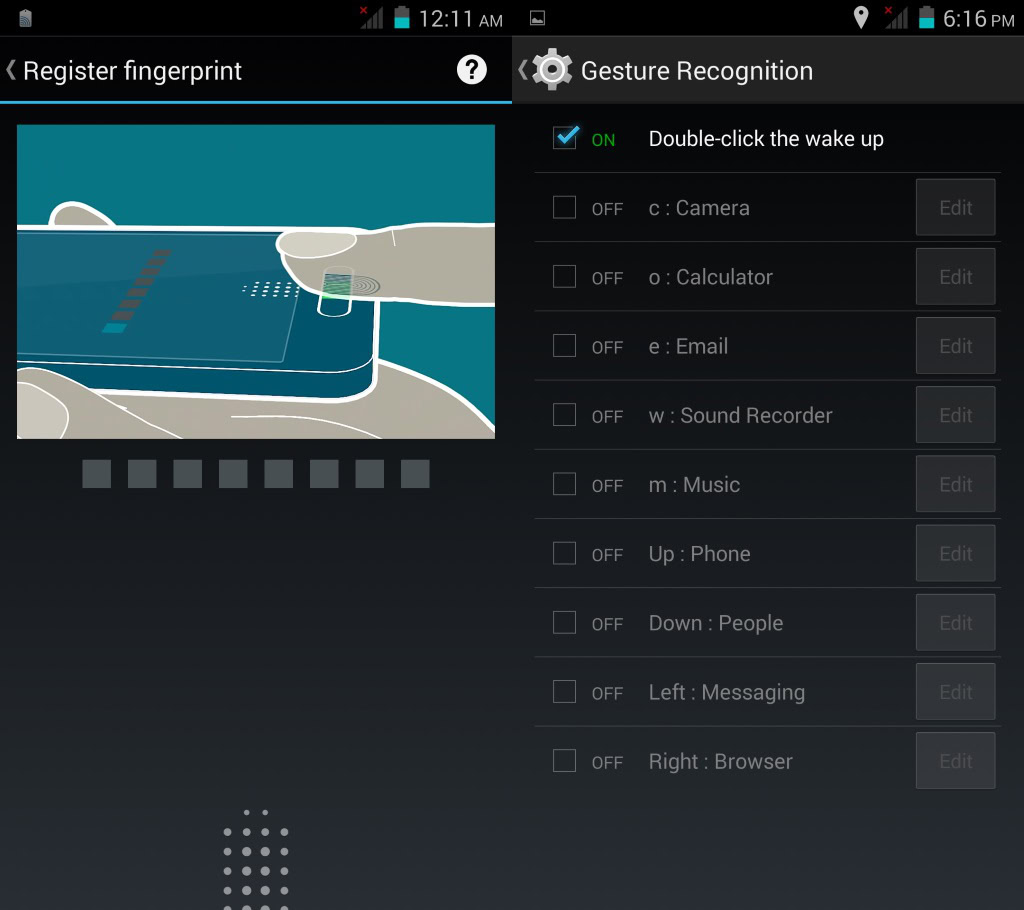
The fingerprint scanner is incorporated into the home button and the software allows you to set the screen to unlock only with your fingerprint. Overall the scanner and the unlock mechanism worked well. The number of misreads was relatively low and I kept the feature activated for a while. I only removed it, not because the scanner wasn’t up to the job, but because having to swipe my finger over the scanner to unlock the screen was becoming a bit tedious.
The Elephone P5000 isn’t the first phone with an extra large battery. Another good example is the THL 5000. I used the THL 5000 as my daily driver for around 6 months, so I have a lot of experience with the device. Both cost around the same price and both share a number of common features: octa-core Cortex-A7 processor, Mali-450MP GPU, 2GB RAM, and 16GB storage.
The differences come down to this: the THL 5000 supports 3G on 850/2100MHz, compared to 900/1900/2100MHz on the P5000; the THL 5000 has a 13MP/5MP camera combo, compared to the 16MP/8MP of the P5000. The THL 5000 has Corning Gorilla Glass, but the P5000 has a fingerprint scanner. After that I guess it comes down to personal preference with regards to the styling, and the brand.
To sum up, the P5000 is a 3G enabled smartphone, with a full HD display and an octa-core 32-bit CPU. The battery is a big plus point, and companies like Elephone are certainly pushing the standard feature list upwards. For once, the inclusion of a fingerprint scanner is more than just a gimmick, as it actually works. The over-heating issue might be a problem for some, but if you are aware of it then it can be easily managed.